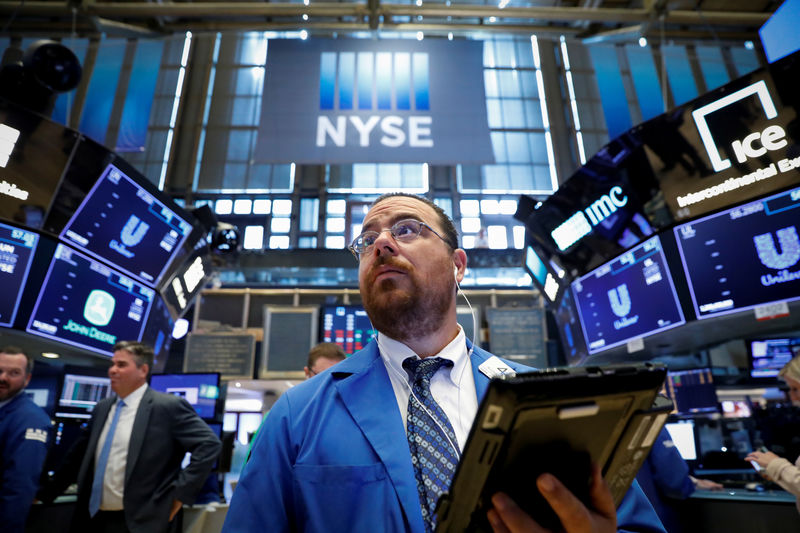Last week, the three major US stock indices witnessed a largely positive performance. Specifically, the S&P 500 saw a minor decrease of 0.14%, closing at 5,234.18, while the Nasdaq Composite edged higher by 0.16%, finishing at 16,428.82, marking another record close.
The Dow Jones Industrial Average experienced a slight decline, dropping 305.47 points or 0.77%, to settle at 39,475.90, despite achieving its strongest week of the year following consecutive record highs.
Throughout the week, all three major stock indexes recorded significant gains. The S&P 500 advanced approximately 2.3%, with the Dow following closely, with an increase of nearly 2%, marking its most successful week since December. Leading the trio, the Nasdaq Composite surged by almost 2.9% as the week's standout performer.
In terms of economic development, the most important event was the Federal Reserve’s monetary policy meeting, where the central bank kept the target range for the influential rate in the range of 5.25%-5.5%.
The Fed officials said they still expect to begin cutting rates by the end of 2024, however, the bank plans to proceed with those plans cautiously after raising borrowing costs to the highest levels in over two decades.
"We want to be careful and fortunately with the economy growing, the labor market strong and inflation coming down, we can be" Fed chair Jerome Powell said at a press conference after the Fed's meeting.
Looking forward, this week is set to bring another batch of important economic data, particularly the durable goods report on Tuesday and the Core Personal Consumption Expenditures (PCE) price index print on Friday.
At the same time, markets will also be keenly awaiting the real Gross Domestic Product (GDP) report for Q4 2023, new earnings reports, and several upcoming speeches from Fed officials, including Chairman Powell and San Francisco Fed President Mary C. Daly.
What strategists expect from the upcoming PCE report
In the shortened trading week due to the holiday, market participants will be awaiting a fresh set of inflation data.
With the markets closed for Good Friday, investors' attention will still be keenly focused on the release of the Personal Consumption Expenditures (PCE) index at the end of the week, a key indicator for the Federal Reserve as it provides insights into inflation trends, guiding their decisions on potential interest rate cuts.
The PCE report for last month showed a 0.3% rise in consumer prices from December to January, marking an increase from the 0.1% jump observed the month before. Further, the Bureau of Labor Statistics reported that the Consumer Price Index (CPI) for February was higher than anticipated, continuing a trend of hotter-than-expected inflation for the second consecutive month.
Despite this uptick in inflation, Federal Reserve officials have maintained their forecast of three interest rate cuts for this year, without changing their stance due to the recent data. However, they anticipate fewer cuts in 2025 compared to their earlier projections.
For this week’s PCE data, Goldman Sachs economists forecast a 0.4% increase in personal income and a 0.5% rise in personal spending for February.
They estimate the core PCE price index to have increased by 0.29%, translating to an annual rate of 2.81%. Moreover, the economists predict the headline PCE price index to have grown by 0.36% from the previous month, resulting in a year-over-year rate of 2.47%.
“Our forecast is consistent with a 0.33% increase in our trimmed core PCE measure (vs. 0.41% in January and 0.35% in December),” economists said.
What analysts are saying about US stocks
JPMorgan: “Though there is a credible argument for why the Fed will not cut at all this year, I do not think that derails the bull case which is predicated on strong economic growth and subsequently robust earnings environment. Any rate cuts would only fuel the bull case; when considering the last 5 cutting cycles ex-COVID, these cuts, on average, boosted stocks on a 1-month, 3-month, 6-month, and 9-month basis (see the table below). Those gains see both Tech, small-caps, and commodities outperform.”
RBC Capital Markets: “We continue to see sentiment as stretched and think a US equity market pullback is overdue. But the risks of a melt-up, particularly given the dovish Fed meeting and rapid increases to 2024 GDP that are underway, have admittedly grown. We’re keeping a close eye on the AAII data set where net bullishness has been roughly one standard deviation above its long-term average, but not two standard deviations, which can occasionally mark the top. We are starting to worry again that we’ll get there before this rally takes a breather.”
Oppenheimer: “S&P 500 earnings results over the most recent two quarterly reporting seasons, economic data that persists in showing resilience, the Fed’s mandate-sensitive monetary policy, and prospects for innovation coupled with cross generational demographic needs that suggest a shift in mindset driven not so much by fear and greed but a need to invest for intermediate to longer-term goals suggest to us an opportunity to tweak our target higher.”
Citi: “A dovish FOMC meeting increases our confidence that Fed officials are prepared to begin reducing policy rates in June.. While Chair Powell claimed that data do not show signs of a weakening labor market, we have a less sanguine view of data like the falling hiring rate. We continue to expect rate cuts to begin in June and that a clearer weakening in labor market data will lead to 125bp of cuts total for this year.”
